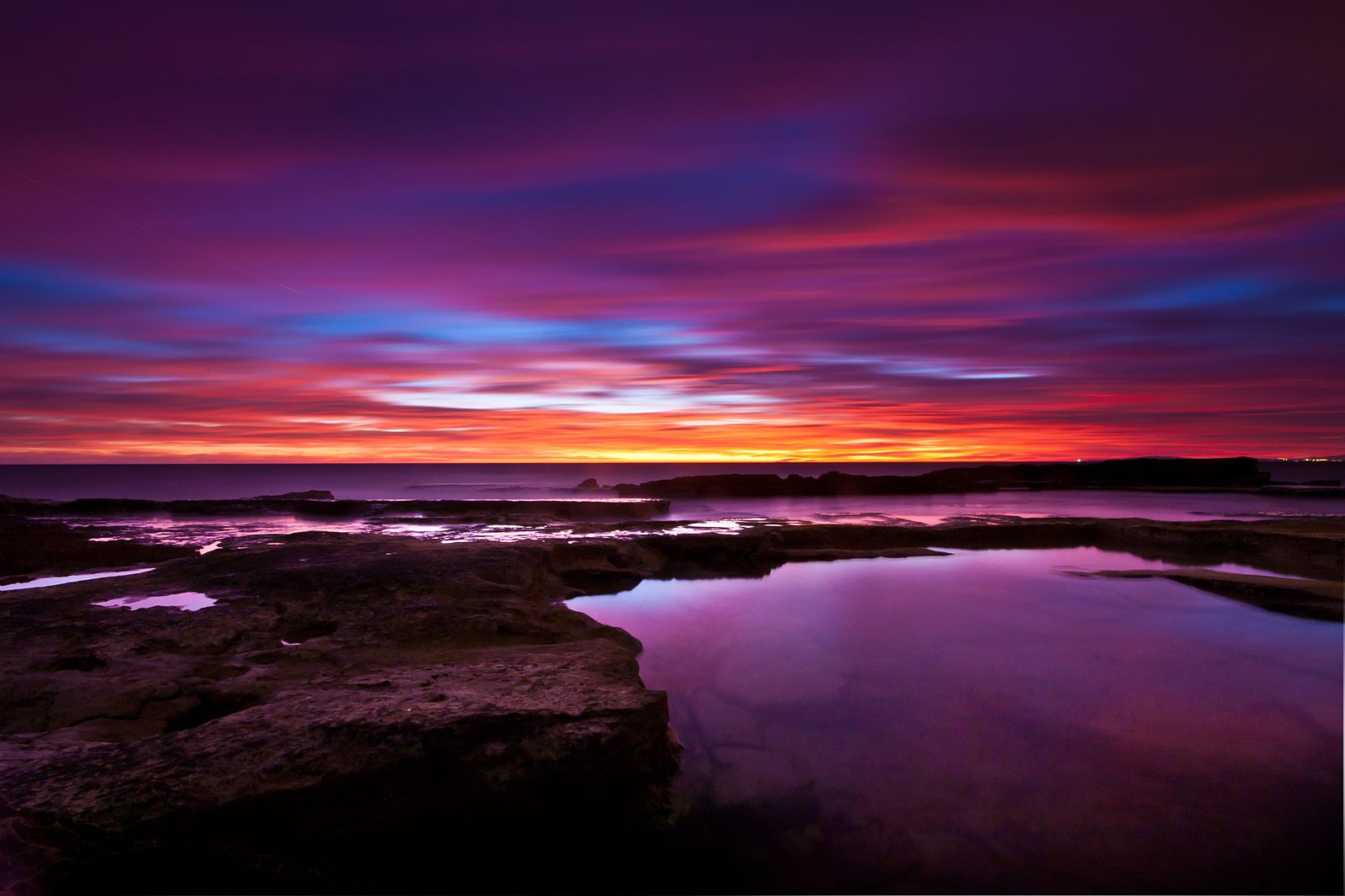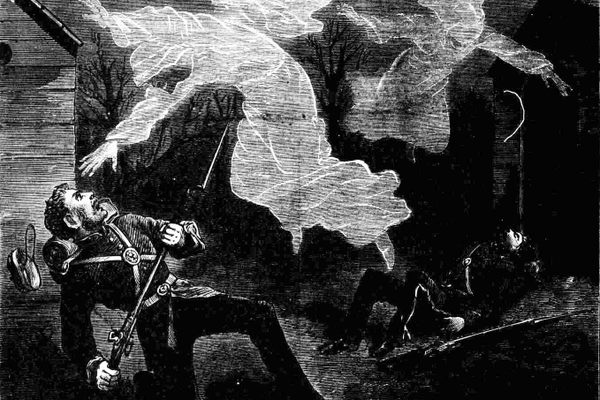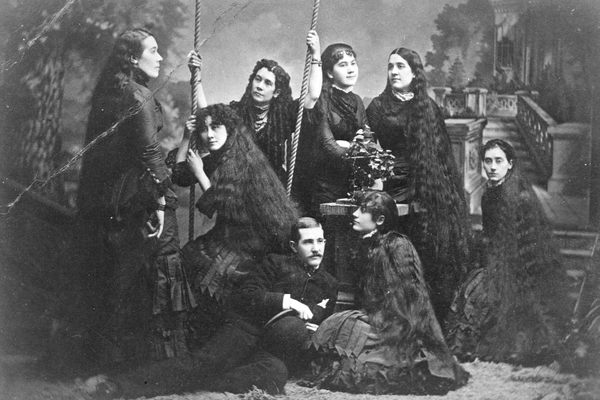History’s Most Over-the-Top Sunset Descriptions
Long before Instagram, sunset enthusiasts strained the English language to its limit.

“Sunset Over the Golden Horn,” by Ivan Constantinovich Aivazovsky, from 1866. (Image: Public Domain)
Sunsets: they’re great. Nowadays, we can show off our sunset-spotting prowess across a variety of media. You can Tweet a sunset. You can Snap a sunset, then ‘gram it for good measure. You can Youtube or Vine a variety of sunsets over the course of a particular timespan. The possibilities are as large as the sun itself.
But before color photography was invented in 1866, those who wanted to get across their latest and/or greatest sunset experience had only two available modes: painting, and extremely purple prose. Many, many people rose to the challenge: Newspapers, memoirs, travelogues, and scientific treatises are all full of charmingly lurid paeans to the colorful end of the day, tinted further by a variety of forces.
Criteria for this collection was scrupulous: no fictional or metaphorical sunsets (otherwise, you open yourself up to poetry—a terrible wormhole); no sunrises (too sanctimonious); pre-1866 only. Here are the most vivid sunsets we found.
1. “The Suns true place…”
“By which Tables on Saturday April 9th, at the time of Sun-set, supposed at 7 ho. 3 minutes P.M. I find:

John Flamstead, Philosophical Transactions, 1669

A British sunset, feat. much mellowness of light. (Photo: Keith Laverack/CC BY-SA 2.0)
2. “Such rich and varied dyes”
“Where, after all, shall we find Sunsets equal to British ones? Where such serenely beautiful horizons—such rich and varied dyes–such mellowness of light—such objects to be irradiated by it—and evenings so happily adapted for contemplating them? The mixture of fierceness and gloom in a West India Sunset, call the mind the coarseness of the people there, and the implacable deadliness of the climate; the milder glories of one in the Southern Atlantic, can be enjoyed at sea only, where everything else is unpleasing; the effect of a similar scene in America is injured by want of objects of antiquity, and of the lofty associations connected with them; and in India, the tropical glare attending the departure of day, forces us to imprison ourselves while it is taking place, and to remember that we are in exile.”
John Howison, “Sunset in Different Climes,” Times Telescope, 1826
3. “A smaller minute sprinkle”
“There was a fine sunset over the hills of Granada. I imagined it lighting up the Alhambra. The clouds were like great wings of gold and yellow and rose-colour, with a smaller minute sprinkle in one spot, like a shower of glowing stones from a volcano. You see very faint imitations of such lustre in England.”
Leigh Hunt, Visit to Italy, 1828

Sunset in Portugal, glorious to behold. (Photo: Alvegaspar/Gnu 1.2)
4. “Increasing every moment”
“The mists were rolling away from his feet in huge wreaths, which gradually, as they became thinner, received and transmitted the rays of an evening sun, and were lighted up with a golden and crimson radiance, glorious to behold, and increasing every moment in splendor.”
“Book Review: ‘Calavar,’” The North American Review, 1835.
5. “The brilliancy of the colors”
“To a native of New England, few objects appear more beautiful than the setting of the sun as it appears from the hills and valleys of her mountains. The clearness of the atmosphere, and the brilliancy of the colors, fasten his gaze upon the west as the sun has just sunk behind the mountains. As he passes, however, to the middle and western parts of the State of New York, the sunsets become still more beautiful, and often absolutely splendid.”
Prof. C. Dewey, American Journal of Science, 1840.

What can the citizen know of sights like this Mallorca sunset? (Photo: Andrés Nieto Porras/CC BY-SA 2.0)
6. “The azure of a thousand miles of champaign”
“What can the citizen, who can see only the red light on the canvass of the waggon at the end of the street, and the crimson colour of the bricks of his neighbor’s chimney, know of the flood of fire which deluges the sky from the horizon to the zenith? What can even the quiet inhabitant of the English lowlands, whose scene for the manifestation of the fire of heaven is limited to the tops of hayricks, and the rooks’ nests in the old elm-trees, know of the mighty passages of splendour which are tossed from Alp to Alp over the azure of a thousand miles of champaign?… What recollection have we of the sunsets which delighted us last year?”
John Ruskin, Modern Painters, 1843.
7. “The changeful rose color”
“The island seemed to fold in, as it were, with the westerly cliffs of the Cape, until in a south view they formed one towering, stupendous mass of dark rocks, most richly tinged with the changeful rose color, and purple, and gold of the sunset’s glorious hues, which shone forth in still greater lustre from contrast with the deep chasms and ravines which were in almost black shadow, and with the white crested hills of the blue sea, that dashed their glittering spray high over the broken crags. It was a scene never to be forgotten.”
Louisa Anne Meredith, My Home in Tasmania, 1853.
8. “A tedious, stupid sun”
“If ever there was a tedious sunset it was the one that took place on this night. Sunsets had been generally rather a fertile source of conversation at Mr. Tulip’s. It was usual to go out on the piazza and watch them, and expatiate upon their beauty—though, if I may be allowed to whisper the heresy, I never in my life saw sunsets that were all so like one another as those at Tulipton—and the ladies grew sentimental watching them, and the gentlemen poetical, and much enthusiastic exclamation attended the retirement of the drowsy luminary. But on this memorable occasion every one grew disgusted with him. There never was such a tedious, stupid sun.”
F.J. O’Brien, New York Times, 1853.
9. “Athwart his majestic easel”
“As the sun goes down he begins to fling his parting rays across all the sky, from horizon to zenith. He paints the clouds with his fiery pigments, and they glow with gorgeous colors from lake to river. Golden and yellow near the track of his disappearance, the hues change to boundless masses of pink, and crimson, and scarlet, and purple, further up the dome of the sky… Fiery as are the colors this sun-painter flings athwart his majestic easel, yet are they by so much the more quickly burned out and faded. The sunset is gorgeous only to be perishable and transitory. Gold changes to crimson, crimson deepens to purple, and soon the glory of the heavens is passed away. We turn and journey silently down to the lake.”
“Letter from Lake Oscawana,” New York Times, October 13th, 1865.








Follow us on Twitter to get the latest on the world's hidden wonders.
Like us on Facebook to get the latest on the world's hidden wonders.
Follow us on Twitter Like us on Facebook